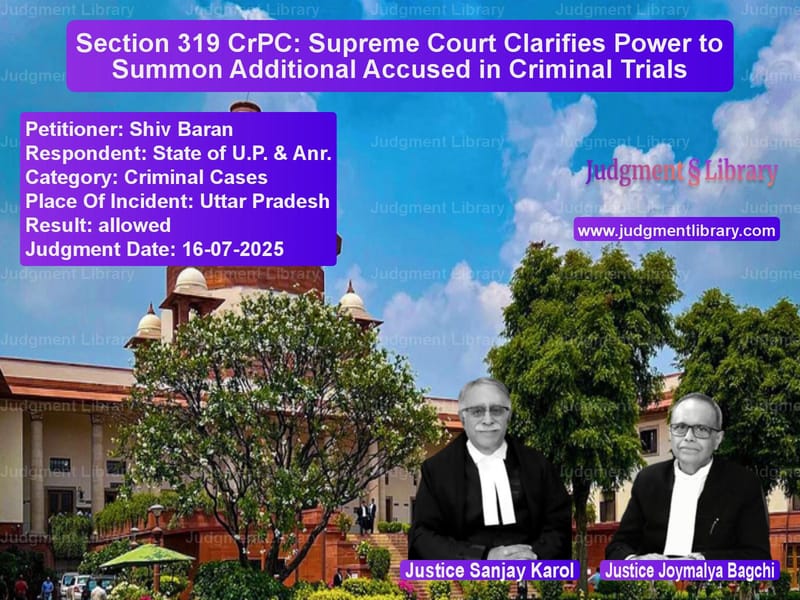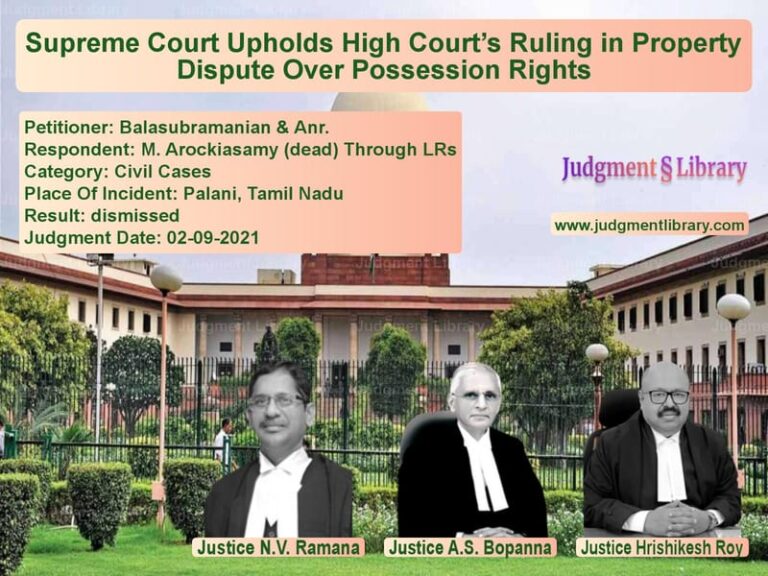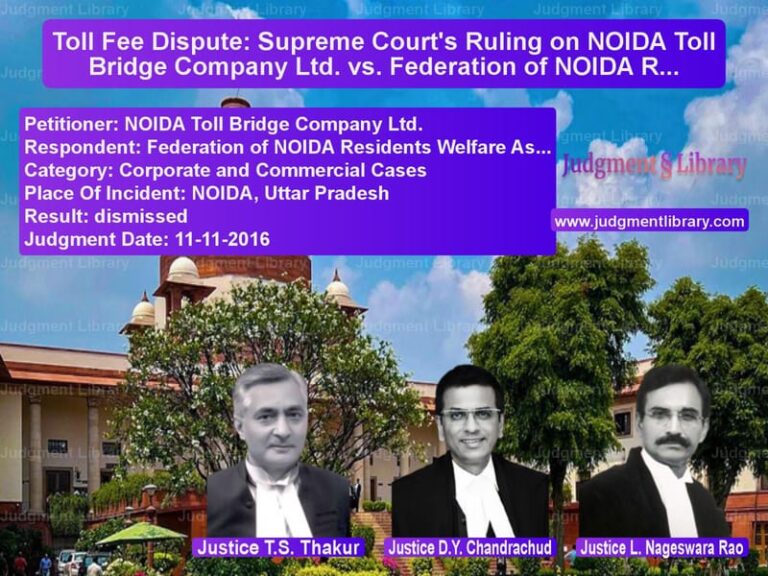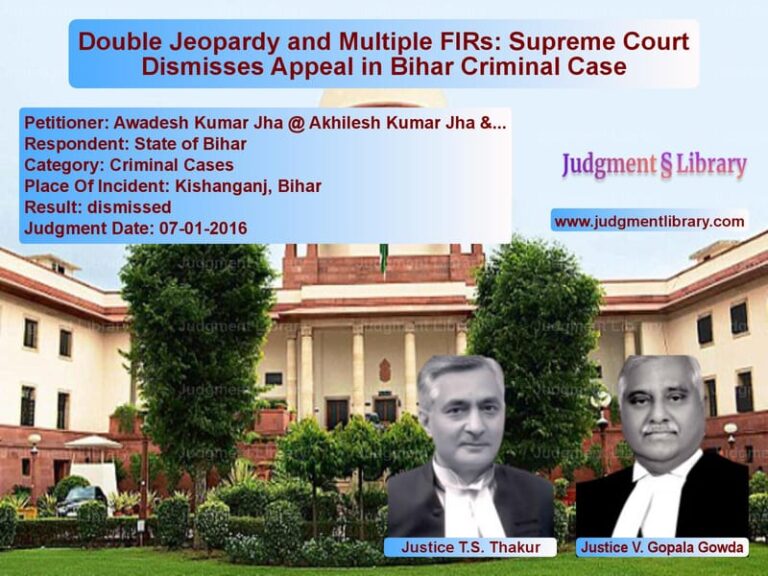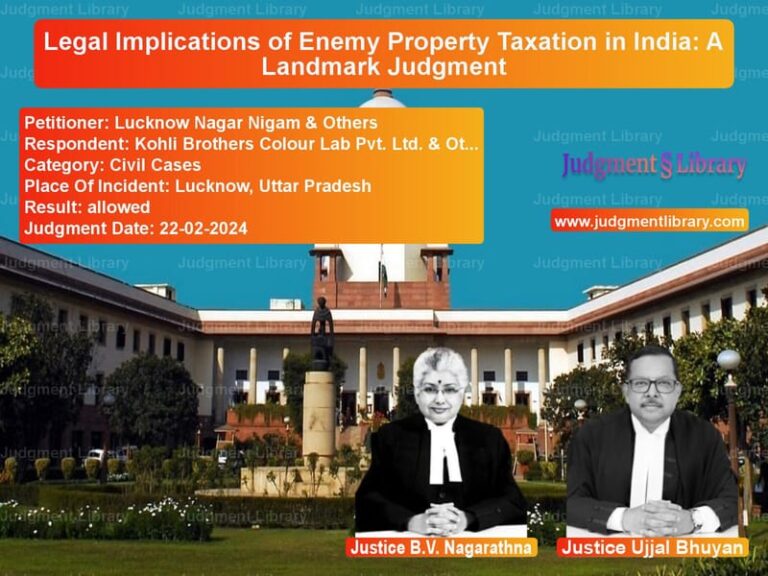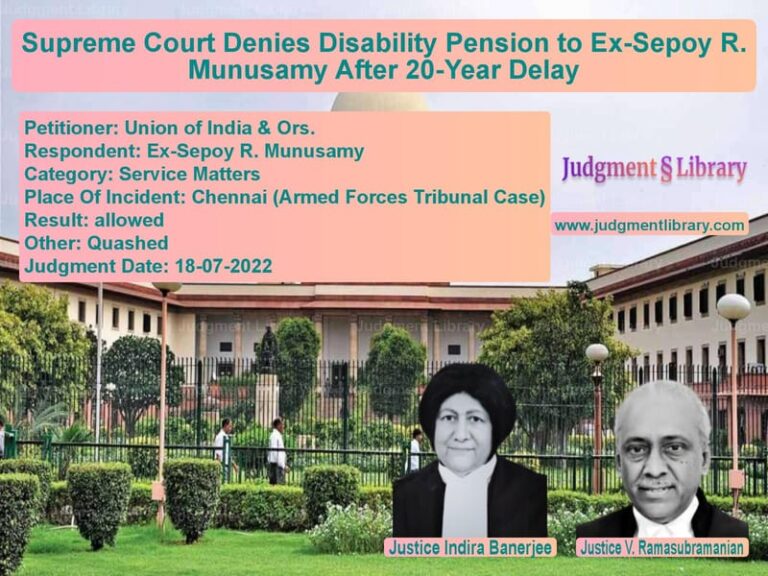Section 319 CrPC: Supreme Court Clarifies Power to Summon Additional Accused in Criminal Trials
The Supreme Court of India recently delivered a landmark judgment clarifying the scope and application of Section 319 of the Code of Criminal Procedure, which deals with the power of courts to summon additional accused persons during trial proceedings. The case involved a criminal appeal concerning the tragic death of Yadunath, who was allegedly assaulted by multiple individuals in Uttar Pradesh.
The legal battle centered around whether Rajendra Prasad Yadav, who was named in the FIR but not charge-sheeted by the investigating officer, should be summoned as an additional accused based on witness testimony during the trial. The case traveled through multiple judicial forums – from the Sessions Court to the High Court and finally to the Supreme Court – with conflicting interpretations of the legal standards applicable under Section 319 CrPC.
The Supreme Court’s judgment provides crucial guidance on when and how courts should exercise their power to summon additional accused, balancing the rights of the accused with the need to ensure that no guilty person escapes the process of law.
Factual Background of the Case
The case originated from an incident that occurred on November 29, 2017, when two FIRs were registered concerning related events. The first FIR was lodged by Shiv Baran, the appellant-complainant, under Sections 302 (murder), 307 (attempt to murder), 504 (intentional insult), and 506 (criminal intimidation) of the Indian Penal Code against four persons: Rahul, Dinesh, Rajendra, and Shiv Moorat. The complainant alleged that these accused persons entered his house with common intention and assaulted his brother Yadunath, who later succumbed to his injuries in the hospital.
The investigating officer, after completing the investigation, concluded that Rajendra Prasad Yadav had played no role in the alleged crime. Consequently, the chargesheet filed on February 24, 2018, implicated only Dinesh Yadav and Shiv Murat Yadav for offences under Sections 302, 307, 504, and 506 read with Section 34 of IPC.
During the trial, however, three witnesses – PW1 Shiv Baran Yadav (the complainant), PW2 Raj Baran, and PW3 Subhash Yadav – deposed about the involvement of Rajendra Prasad Yadav in the crime. Based on this testimony, the complainant moved an application under Section 319 CrPC seeking to add Rajendra Prasad Yadav as a co-accused.
The Sessions Court initially rejected this application on January 31, 2022, but on remand by the High Court, eventually allowed it on September 28, 2023. However, when Rajendra Prasad Yadav challenged this summoning order, the High Court set it aside, observing that the witnesses had not ascribed any specific role to him and that there was no evidence of strong motive.
Legal Framework: Section 319 CrPC
Section 319 of the Code of Criminal Procedure is a crucial provision that empowers courts to proceed against persons not originally arrayed as accused if evidence emerges during trial suggesting their involvement in the offence. The provision states: “Where, in the course of any inquiry into, or trial of, an offence, it appears from the evidence that any person not being the accused has committed any offence for which such person could be tried together with the accused, the Court may proceed against such person for the offence which he appears to have committed.”
The Supreme Court emphasized that this provision is based on the doctrine of “judex damnatur cum nocens absolviture” (Judge is condemned when guilty is acquitted). The Court stated: “The provision casts duty upon the Court to ensure that the real culprit does not get away unpunished, for the same to be part of a fair trial. However, the power under the said Section has to be invoked only upon the satisfaction of cogent material brought on record, necessitating such impleadment. The power to be exercised, needless to add, is to be with utmost caution and not in a casual, callous or cavalier manner – for the same is only to advance the cause of justice and not be a tool to harass the individual or result into an abuse of the process of law.”
Supreme Court’s Analysis of Legal Principles
The Supreme Court extensively reviewed its previous judgments, particularly the Constitution Bench decision in Hardeep Singh v. State of Punjab (2014), which had authoritatively settled several contentious issues regarding Section 319 CrPC.
The Court reiterated the principle from Hardeep Singh that “once examination-in-chief is conducted, the statement becomes part of the record. It is evidence as per law and in the true sense, for at best, it may be rebuttable. An evidence being rebutted or controverted becomes a matter of consideration, relevance and belief, which is the stage of judgment by the court. Yet it is evidence and it is material on the basis whereof the court can come to a prima facie opinion as to complicity of some other person who may be connected with the offence.”
The Court further emphasized that “all that is required for the exercise of the power under Section 319 CrPC is that, it must appear to the court that some other person also who is not facing the trial, may also have been involved in the offence. The prerequisite for the exercise of this power is similar to the prima facie view which the Magistrate must come to in order to take cognizance of the offence.”
Regarding the standard of proof required, the Court cited Labhuji Amraiji Thakor v. State of Gujarat (2019), which clarified that “the test that has to be applied is one which is more than prima facie case as exercised at the time of framing of charge, but short of satisfaction to an extent that the evidence, if goes unrebutted, would lead to conviction.”
Application to the Present Case
Examining the factual matrix, the Supreme Court found that the High Court had erred in its approach. The Court noted that all three eyewitnesses had consistently named Rajendra Prasad Yadav and assigned him a specific role in the crime.
The Court reproduced relevant extracts from the witness testimonies. PW1 Shiv Baran Yadav, in his statement recorded on March 10, 2021, deposed: “I and my brother Yadunath were sitting at the door taking sun. Rajendra, Dinesh, Rahul and Shivmurti of my own village were carrying axes. Dinesh and Rahul were carrying sticks… Rajendra had a baton. They came together and started abusing us…”
PW2 Raj Baran testified that “when his father and uncle were basking under the sun, ‘Rajendra armed with stick’ came to the door of his house with a common objective and started assaulting him and his family members.” Similarly, PW3 Subhash Yadav deposed “that Rajendra, who had a stick, started assaulting both his father and grandfather.”
The Supreme Court observed: “The evidence from all three alleged eyewitnesses, although prima facie, suggests the complicity of Rajendra (Respondent No. 2); a specific role being assigned to him, indicating that he was present at the scene of the occurrence, armed with a stick. The High Court tried to apply the same standard in deciding this application as is ordinarily used at the end of the trial in determining the conviction or otherwise of the accused. Whereas it ought to have considered that the standard of satisfaction required is short of the standard necessary for passing a final judgment after trial.”
The Court further criticized the High Court for conducting what amounted to a “mini trial” by relying on affidavits submitted before the Superintendent of Police regarding the innocence of Respondent No. 2. The Supreme Court emphasized that questions about motive, common intention, sequence of occurrence, and identification of the aggressor are matters to be considered at the stage of final adjudication, not while deciding an application under Section 319 CrPC.
Key Principles Established
The Supreme Court summarized the statutory requisites for summoning any person not being the accused under Section 319 CrPC: “(a) such person has committed an offence; (b) his complicity is revealed from the evidence collected during inquiry or trial; and (c) for such offence, he can be tried together with the accused already facing trial.”
The Court also outlined the principles that trial courts should follow while exercising power under this section: “(a) This provision is a facet of that area of law which gives protection to victims and society at large, ensuring that the perpetrators of crime should not escape the force of law; (b) It is the duty cast upon the Court not to let the guilty get away unpunished; (c) The Trial Court has broad but not unbridled power as this power can be exercised only on the basis of evidence adduced before it and not any other material collected during investigation; (d) The Trial Court is not powerless to summon a person who is not named in the FIR or Chargesheet; they can be impleaded if the evidence adduced inculpates him; (e) This power is not to be exercised in a regular or cavalier manner, but only when strong or cogent evidence is available than the mere probability of complicity; (f) The degree of satisfaction required is much stricter than the prima facie case, which is needed at the time of framing of charge(s); (g) The Court should not conduct a mini-trial at this stage as the expression used is ‘such person could be tried’ and not ‘should be tried’.”
Conclusion and Directions
The Supreme Court allowed the appeal and set aside the High Court’s order, thereby restoring the Sessions Court’s summoning order dated September 28, 2023. The Court directed the parties to appear before the Trial Court on August 28, 2025, and expedited the trial with a direction to complete it within 18 months.
This judgment reinforces the delicate balance that courts must maintain in criminal jurisprudence – ensuring that the process of law is not abused to harass individuals while simultaneously guaranteeing that no guilty person escapes justice due to technicalities or investigative lapses. The Supreme Court’s clarification of the legal standards under Section 319 CrPC provides valuable guidance to trial courts across the country in exercising this significant power appropriately and consistently.
Petitioner Name: Shiv Baran.Respondent Name: State of U.P. & Anr..Judgment By: Justice Sanjay Karol, Justice Joymalya Bagchi.Place Of Incident: Uttar Pradesh.Judgment Date: 16-07-2025.Result: allowed.
Don’t miss out on the full details! Download the complete judgment in PDF format below and gain valuable insights instantly!
Download Judgment: shiv-baran-vs-state-of-u.p.-&-anr.-supreme-court-of-india-judgment-dated-16-07-2025.pdf
Directly Download Judgment: Directly download this Judgment
See all petitions in Murder Cases
See all petitions in Bail and Anticipatory Bail
See all petitions in Attempt to Murder Cases
See all petitions in Fraud and Forgery
See all petitions in Theft and Robbery Cases
See all petitions in Extortion and Blackmail
See all petitions in Judgment by Sanjay Karol
See all petitions in Judgment by Joymalya Bagchi
See all petitions in allowed
See all petitions in supreme court of India judgments July 2025
See all petitions in 2025 judgments
See all posts in Criminal Cases Category
See all allowed petitions in Criminal Cases Category
See all Dismissed petitions in Criminal Cases Category
See all partially allowed petitions in Criminal Cases Category

